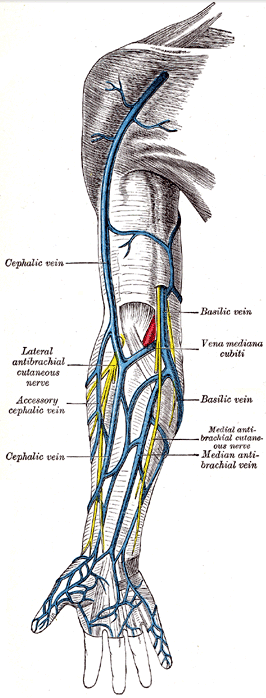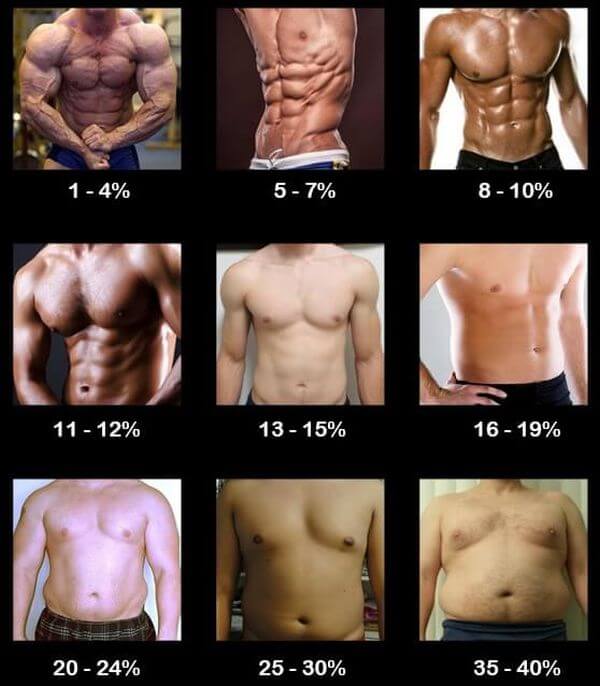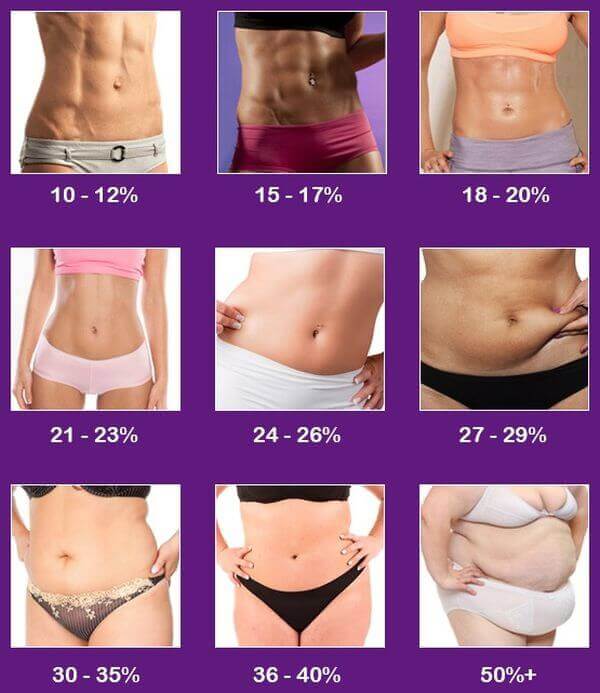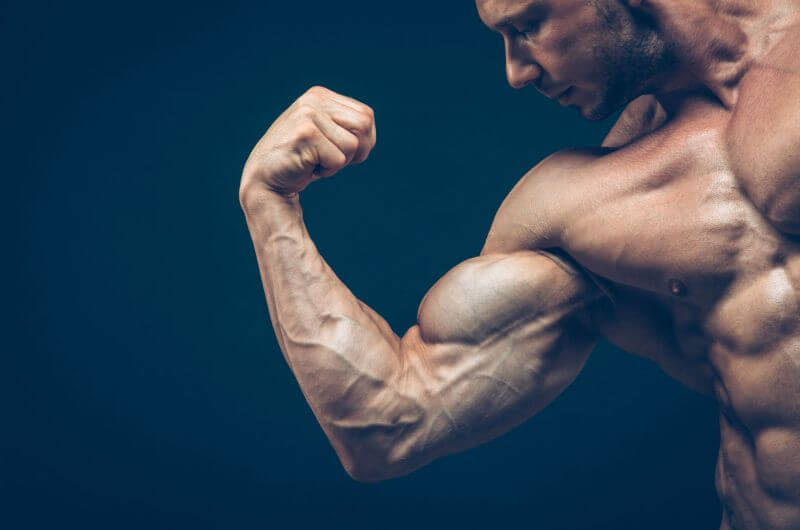What would you rather have—a Rolex watch or more vascular arms, legs, and abs?
If you chose the latter, I like you, and you’ve come to the right place.
Because while I can’t help you get a shiny new Yachmaster (this guy can, though), I’m going to show you exactly what you need to become the proud owner of some new skin-popping veins.
And yes, you can get more vascular even if you’re genetically the “smoother” type, like me.
Case in point—here’s a shot of me after 2 years of following crappy weightlifting and diet programs:

Not a vein in sight, despite being at least relatively lean.
And here’s me now:
So if you’re worried that you’ll never get to admire the beauty of your vascular system, take heart. By the end of this article, you’ll be on your way.
Let’s get to it.
Table of Contents
Want to listen to more stuff like this? Check out my podcast!
The 4-Step Solution to Get More Vascular
If you’ve sat in on any locker room broscience sessions, you’ve probably heard quite a few opinions on how to get more vascular.
Some people say you have to do a lot of high-rep, “pump” training. Others say a low-carb diet is the key. Others still say it’s all in how much sodium and water you eat and drink.
Well, they’re all wrong.
Eating carbs and salt can temporarily increase vascularity (more on that soon), but all in all, you can look softer than a velvet sponge regardless of how much or little carbohydrate, sodium, or water is in your diet.
What really determines your general vascularity, then?
Well, the first thing you should know is genetics certainly play a role here.
Some people are just naturally more vascular and, after following my advice, will always have more veins on display than others.
We can’t do anything to improve our genetics, of course, but that doesn’t mean we can’t reach a level of vascularity that we’re happy with. We can and, fortunately, and it’s pretty simple.
Genetics aside, your level of vascularity is primarily determined by several things (and in this order):
- Your body fat percentage.
- How big and dilated your blood vessels are.
- How big your muscles are.
- How much water you’re holding under your skin.
In short, the leaner you are, the bigger and more dilated your veins are, the more muscle you have, and the less water you’re holding, the more vascular you’ll be.
Let’s look at each of these points in more detail.
How Body Fat Percentage Affects Vascularity
If you don’t have much in the way of vascularity, even when you have a pump, I have good news:
You’re probably just too fat.
And more good news:
(And if you’d like specific advice about what diet to follow to lower your body fat percentage, take the Legion Diet Quiz.)
You see, the veins that you’re looking to draw out are known as superficial veins because they’re close to the surface of the body.
For example, the veins highlighted blue in the image below are the superficial veins we see in vascular arms:

We both have these veins, of course, and the main reason I can see mine but you can’t see yours is simply because you have too much fat between them and the surface of your skin and I don’t.
Here are good visuals for how vascularity correlates to body fat percentage for most guys and gals:


As you can see, for us guys, it breaks down like this:
- 15%+ Body Fat
Very little vascularity anywhere, if any, even with a pump.
- ~12% Body Fat
Arm vascularity starts to appear, but usually requires a pump. Cephalic vein (see image above) may peek through, too.
- ~10% Body Fat
Clear arm vascularity with a pump and, depending on your genetics, without a pump as well. Shoulder and leg vascularity can start to show at this level of body fat as well.
- ~8% Body Fat
Clear arm, shoulder, and leg vascularity with and without a pump. Ab vascularity starts to show around this level of leanness too.
- Below 8%
Vascularity everywhere becomes more and more pronounced.
Read: How to Calculate Your Body Fat Percentage Easily & Accurately
And again, for another example of vascularity in someone that isn’t naturally all that vascular, here’s a shot of me at about 6% body fat:

Now, you generally see less vascularity in women for two reasons:
They have far less muscle and far more fat than most guys.
I rarely ever hear from women that want to increase vascularity, but if that’s you, just know it works the same as with men.
You have your genetic predispositions, body fat levels, blood vessel size, muscularity, and water retention, and if you follow the advice in this article, you can get more vascular, too.
How Blood Vessel Size & Vasodilation Affects Vascularity
The size of your blood vessels also play a big role is how vascular you look because the larger they are, the more likely they will be visible.
There are two elements in play here: the size of the vessels when “pumped” and relaxed.
When they’re pumped up, you’re experiencing vasodilation, which is a fancy word that refers to the expansion of your blood vessels.
For example, when you exercise, your heart has to beat faster to deliver oxygen throughout your body, and this increases your arterial (traveling from the heart) blood pressure. Certain supplements have similar effects as well, like theanine and citrulline.
Over time, the repetition of vasodilation can cause blood vessels to remain widened in a resting state, and intense exercise can even cause the growth of new blood vessels.
This is why people that exercises regularly are often more vascular than those that don’t.
While exercise causes the more permanent type of vasodilation that we ultimately want, you can also use carbs and sodium to temporarily increase the size and visibility of your veins.
See for yourself: eat a salty, high-carb meal and chances are that within 30 minutes or so, you’ll have a pump.
How Muscle Size Affects Vascularity
The bigger your muscles are, the more vascular you’re going to be.
As your veins are situated on and around your muscles, bigger muscles push them closer to the surface of the skin, where they can be seen.
This is one of the reasons that people naturally get more vascular the longer they lift weights.
Read: The Best Way to Stimulate Muscle Hypertrophy (Build Muscle)
How Water Retention Affects Vascularity
Just as your body stores fat in between your muscles and the surface of your skin, it also holds water.
And the more water there is in this subcutaneous region, the less vascular you’re going to look.
(This can be particularly frustrating when you’re cutting because it not only keeps you looking soft, but it can obscure fat loss as well.)
Thus, if you want to maximize vascularity, you want to minimize water retention.
The three most reliable ways to do that are…
1. Lower your cortisol levels.
Cortisol is a hormone produced by the adrenals in response to stress and low blood sugar levels.
Almost every cell has receptors for cortisol so its effects are myriad and include influencing blood sugar and fluid retention levels, the metabolism of food, the central nervous system, and more.
Under normal conditions, cortisol doesn’t cause water retention problems. When it’s abnormally high, however, it does.
Check out this article for simple strategies you can use to maintain healthy cortisol levels.
2. Balance your salt and potassium intake.
Sodium is well absorbed by cells and brings water in with it.
Thus, when you eat a large amount of sodium, it can cause cells to temporarily retain water until balance can be restored to cellular fluid levels.
This is also why when you restrict sodium intake, water retention decreases.
Potassium plays a vital role in restoring this cellular fluid balance.
Whereas sodium sucks water into cells, potassium pumps it out, and this is why research shows that restricting potassium intake can increase fluid retention.
Thus, if you want to minimize water retention, you need to keep an eye on your sodium and potassium intakes.
In terms of intake, the Institute of Medicine recommends 1,500 milligrams and an upper limit of 2,300 mg sodium per day, and 4,700 mg of potassium per day.
(A mere teaspoon of salt contains a whopping 2,300 mg of sodium, so it’s no surprise that the average American eats over 3,400 mg per day.)
3. Drink enough water.
If you don’t give your body enough fluids it causes adaptations that increase water retention.
You can prevent this by simply drinking enough water every day.
The Institute of Medicine recommends drinking between 3/4 and 1 gallon of water per day for adult men and women.
If you’re a regular here at Muscle for Life, you probably do quite a bit of exercise, and this increases the amount of water your body needs.
Specifically, you want to replace all water lost through sweating, which can range anywhere from 3/4 to 2 liters per hour depending on how much you sweat due to the intensity and climate.
So, if you start with a baseline water intake of about 3/4 to 1 gallon per day, add 1 to 1.5 liters per hour of exercise, plus a bit more for additional sweating, you’ll be good.
Will Natural Diuretics Reduce Water Retention and Increase Vascularity?
There are many foods and naturally occurring substances that supposedly have diuretic effects, including…
- Caffeine
- Alcohol
- Celery
- Onion
- Eggplant
- Asparagus
- Hawthorn
- Parsley
- Watermelon
- And more…
Well, like the bogus “fat burning food” pitch, the idea of magically dropping large amount of water weight by making slight changes to our diets and supplement regimens sounds great…but it doesn’t work like that.
For example, caffeine and alcohol are mild diuretics, but so mild that the amount of liquid consumed with them more or less negate the diuretic effects.
The story is the same for hawthorn and parsely—two other “natural diuretics” often sold as “slimming.” Research shows that they do indeed possess diuretic properties, but they’re too slight and short-lived to make a significant difference in water retention levels.
The reality is if you suspect you’re holding more water than you should be, fixing it is going to require lifestyle changes and not pills and powders.
Read: What Causes Water Retention and How to Get Rid Of It
The only situation where I would recommend turning to natural diuretics is if you’re very lean and have a competition or photo shoot or some other one-day affair that requires you look as dry and defined as possible.
That’s why many fitness competitors restrict carbohydrate intake leading up to a show, often restrict sodium intake several days before going on stage, and use natural (and artificial) diuretics.
The Bottom Line on How to Get More Vascular

Don’t waste your time with “weird tricks” and supplements that purport to increase vascularity.
Build muscle, get lean, and take simple actions to reduce water retention, and you’ll get there.
Oh and if you want to temporarily increase vascularity, you can…
- Get a pump.
- Eat a bunch of carbs and salt.
- Take the supplements citrulline and theanine, which you’ll find my pre-workout supplement, by the way.
(And if you’d like to know which other supplements to take to reach your fitness goals, take the Legion Supplement Finder Quiz.)
What’s your take on increasing vascularity? Have anything else to share? Let me know in the comments below!
+ Scientific References
- Kreydiyyeh SI, Usta J. Diuretic effect and mechanism of action of parsley. J Ethnopharmacol. 2002;79(3):353-357. doi:10.1016/s0378-8741(01)00408-1
- Alarcón-Alonso J, Zamilpa A, Aguilar FA, Herrera-Ruiz M, Tortoriello J, Jimenez-Ferrer E. Pharmacological characterization of the diuretic effect of Hibiscus sabdariffa Linn (Malvaceae) extract. J Ethnopharmacol. 2012;139(3):751-756. doi:10.1016/j.jep.2011.12.005
- Hobson RM, Maughan RJ. Hydration Status and the Diuretic Action of a Small Dose of Alcohol. Alcohol Alcohol. 2010;45(4):366-373. doi:10.1093/alcalc/agq029
- Maughan RJ, Griffin J. Caffeine ingestion and fluid balance: A review. J Hum Nutr Diet. 2003;16(6):411-420. doi:10.1046/j.1365-277X.2003.00477.x
- Sawka MN, Cheuvront SN, Carter R, et al. Human water needs. In: Nutrition Reviews. Vol 63. ; 2005. doi:10.1301/nr.2005.jun.S30-S39
- Shephard RJ. American College of Sports Medicine Position Stand: Exercise and Fluid Replacement. Yearb Sport Med. 2007;2007:254-255. doi:10.1016/s0162-0908(08)70206-x
- Dietary Reference Intakes: Water, Potassium, Sodium, Chloride, and Sulfate : Health and Medicine Division. http://www.nationalacademies.org/hmd/Reports/2004/Dietary-Reference-Intakes-Water-Potassium-Sodium-Chloride-and-Sulfate.aspx. Accessed December 18, 2019.
- Gallen IW, Rosa RM, Esparaz DY, et al. On the mechanism of the effects of potassium restriction on blood pressure and renal sodium retention. Am J Kidney Dis. 1998;31(1):19-27. doi:10.1053/ajkd.1998.v31.pm9428447
- Singer DR, Markandu ND, Buckley MG, et al. Blood pressure and endocrine responses to changes in dietary sodium intake in cardiac transplant recipients. Implications for the control of sodium balance. Circulation. 1994;89(3):1153-1159. doi:10.1161/01.cir.89.3.1153
- Heer M, Frings-Meuthen P, Titze J, et al. Increasing sodium intake from a previous low or high intake affects water, electrolyte and acid-base balance differently. Br J Nutr. 2009;101(9):1286-1294. doi:10.1017/S0007114508088041
- Connell JM, Whitworth JA, Davies DL, Lever AF, Richards AM, Fraser R. Effects of ACTH and cortisol administration on blood pressure, electrolyte metabolism, atrial natriuretic peptide and renal function in normal man. J Hypertens. 1987;5(4):425-433. http://www.ncbi.nlm.nih.gov/pubmed/2822795. Accessed December 18, 2019.
- Stein CM, Nelson R, Brown M, Wood M, Wood AJ. Dietary sodium intake modulates vasodilation mediated by nitroprusside but not by methacholine in the human forearm. Hypertens (Dallas, Tex 1979). 1995;25(6):1220-1223. doi:10.1161/01.hyp.25.6.1220
- Scott EM, Greenwood JP, Vacca G, Stoker JB, Gilbey SG, Mary DASG. Carbohydrate ingestion, with transient endogenous insulinaemia, produces both sympathetic activation and vasodilatation in normal humans. Clin Sci (Lond). 2002;102(5):523-529. http://www.ncbi.nlm.nih.gov/pubmed/11980571. Accessed December 18, 2019.
- Jensen L, Bangsbo J, Hellsten Y. Effect of high intensity training on capillarization and presence of angiogenic factors in human skeletal muscle. J Physiol. 2004;557(2):571-582. doi:10.1113/jphysiol.2003.057711











